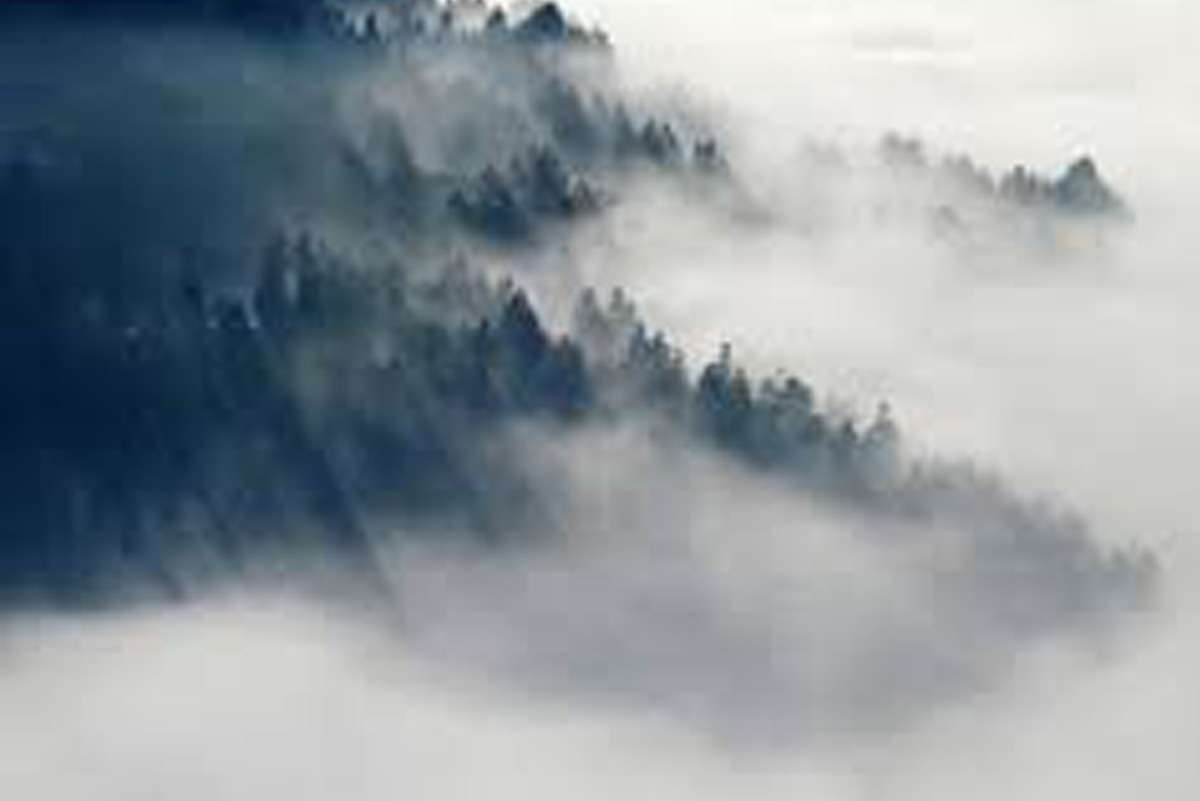Most forms of condensation in the atmosphere result from the air being cooled in some way or the other. Condensation near the ground results from contact cooling, advection cooling and radiation cooling. A number of weather phenomena result from condensation occurring at ground level. Its important to understand the other forms of condensation before actually understanding fog, smog haze and vog
Dew
Dew is the moisture deposited in the form of water droplets on the surface of vegetation and other objects located near the ground level. It forms when nocturnal (night time) terrestrial (long wave) radiation causes heat loss from the Earth’s surface, thereby, cooling the lowest layer of the atmosphere below dew point, leading to condensation. Dew forms under some favourable conditions, such as calm air, low wind speed (< 1 Knot at 2m), high humidity near the surface and a suitable radiating surface. Thus, clear skies, which promote rapid night time cooling and calm weather associated with light divergent winds, are most favourable to dew formation. The ideal conditions occur after a warm day that has followed a period of heavy rainfall when the humidity will be especially high.
Dew forms thickly on those objects, which have cool moist surfaces, metal objects or spider’s web. In a spider’s web, the threads have large surface area, which promotes a rapid loss of heat. Dew is always plentiful on the leaves of plants, especially on those near the ground, such as, grass. This happens because air, near the leaves of plants, always have a high humidity because of transpiration and hence, it requires only small amounts of cooling for condensation to take place.
Frost
When the temperature falls below freezing point, frost forms. If the cooling is not too severe, only the ground and the air immediately in contact with it will reach 0°C and this causes ground frost. An air frost occurs when the temperature of a whole layer of air near the ground also falls below freezing point.
Mist
Mist forms on wet surfaces, lakes or rivers, where the humidity is high and condensation in evening has led to wisps of mist over the fields and near water, especially in sheltered spots. Valley mist form in enclosed valley. At dawn, next day, mist quickly evaporates.
Fog
A mist becomes a fog when the visibility is reduced to below one kilometre. Fogs are formed due to different causes and so, there are different types of fog , one produced by cooling and the other by evaporation. Fogs can be formed by Radiation, advection, Movement of air upslope, or because of mixture of two different types of air masses.
Smog
As originally coined in 1905 by Des Voeux, a natural fog contaminated by industrial pollutants, a mixture of smoke and fog. Today, it is the common term applied to problematical, largely urban, air pollution with or without the “natural fog”, however, some visible manifestation is almost always implied. The word ‘smog’, described stagnant, pollution-laden air masses. Smog is produced as automobile exhausts build up when weather condtitions produce stagnant air masses that do not allow exhausts to disburse. Hence cars are the basic cause of smog. Nitrous oxides and hydrocarbons are given off by the combustion of petroleum. Harmless at first, exposure to sunlight for an hour or so creates an interaction between the two that produces the photochemical oxides popularly referred to as smog.
Haze
Haze is an atmospheric obscurity due to minute suspended solid matter, such as dust or smoke particles, in the sky. The particles are too small to be seen or felt individually, but they diminish visibility.
Vogvog – Google Search
Vog is a form of air pollution that results when sulfur dioxide and other gases and particles emitted by an erupting volcano react with oxygen and moisture in the presence of sunlight. The word is a portmanteau of the words “volcanic”, “smog”, and “fog”.

